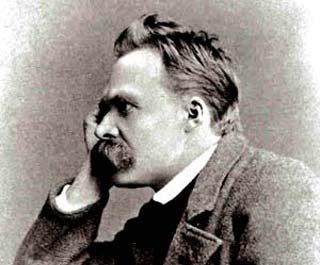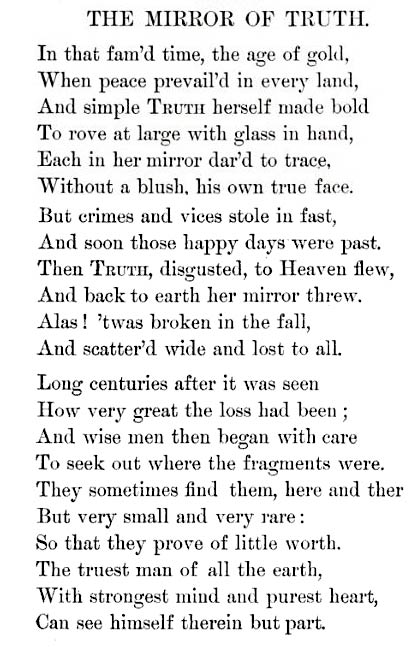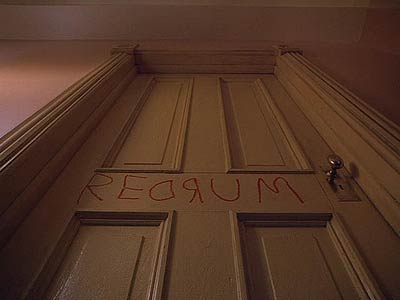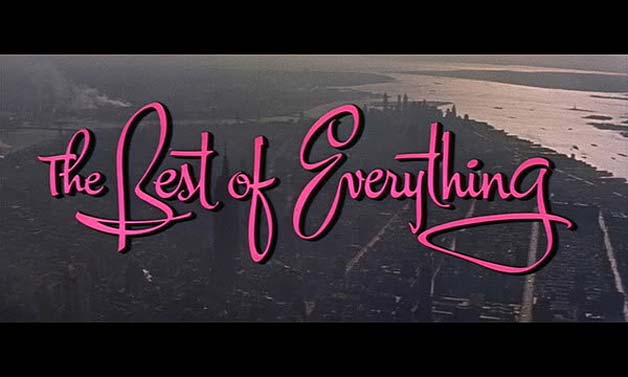ideas
‘The imagination imitates. It is the critical spirit that creates.’ –Oscar Wilde

A foreign language can sound so unintelligible that it’s hard to believe what linguists have been saying for years: Languages from around the world all follow the same rules. No language will ever require placing a particular word at a fixed point in a sentence (e.g., “da” must always be in the fifth position). No language forms questions by simply reversing the words in a statement. The reasons for this lie in the brain’s wiring, which dictates the possible patterns languages can follow. Anything that breaks the mold will be impossible to learn or pass down to a new generation.
Similarly, biologists say there are limits to what forms of life can possibly exist, because all new species must evolve from existing genetic material and because the external environment places constraints on which variations survive.
If evolution limits what creatures can look like and neurobiology dictates how languages work, perhaps our genes constrain the range of possible human cultures. “Some cultural forms will never be considered. … These can be thought of as impossible cultures,” writes Marc D. Hauser, a professor of psychology and human evolutionary biology at Harvard.
artwork { Ana Bagayan }
As your attorney, I advise you to drive at top speed

By setting the microwave timer I’m watching two minutes pass. That’s insufficient time for me to make my bed. That takes about three minutes: to pull up the covers, to turn the sheet down over the blankets, to smooth the sheets and blankets, to fluff the pillows and arrange them over the sheets. I’m not taking into consideration fixing the bedspread under the pillows.
Assuming I make the bed six days a week (changing the linens on the seventh), that’s 18 minutes a week: three hours in 10 weeks; in a year (with two weeks’ vacation), 15 hours — almost two days of work. In 10 years, that’s 150 hours. I figure I’ve spent 900 hours making my bed so far. If I’m awake 16 hours in an average day, that’s equivalent to at least 56 days of my conscious life.
{ Life is like a microwave… | M.N. Kotzin /The Smart Set | Continue reading }
photo { Sandy Kim }
Some are vulgar (What happens in Vegas ain’t shit), others overtly commercial (What happens in Vegas, happens at Cheetah’s)

Information theory is a branch of applied mathematics and electrical engineering involving the quantification of information. (…)
A key measure of information in the theory is known as entropy, which is usually expressed by the average number of bits needed for storage or communication. Intuitively, entropy quantifies the uncertainty involved when encountering a random variable. For example, a fair coin flip (2 equally likely outcomes) will have less entropy than a roll of a die (6 equally likely outcomes).
{ Wikipedia | Continue reading }
Claude Elwood Shannon (1916 – 2001), an American electronic engineer and mathematician, is known as “the father of information theory.”
Shannon is famous for having founded information theory with one landmark paper published in 1948. But he is also credited with founding both digital computer and digital circuit design theory in 1937, when, as a 21-year-old master’s student at MIT, he wrote a thesis demonstrating that electrical application of Boolean algebra could construct and resolve any logical, numerical relationship. It has been claimed that this was the most important master’s thesis of all time. (…)
The Las Vegas connection: Information theory and its applications to game theory
Shannon and his wife Betty also used to go on weekends to Las Vegas with M.I.T. mathematician Ed Thorp, and made very successful forays in blackjack using game theory type methods co-developed with physicist John L. Kelly Jr. based on principles of information theory. They made a fortune, as detailed in the book Fortune’s Formula. (…)Shannon and Thorp also applied the same theory, later known as the Kelly criterion, to the stock market with even better results.
{ Wikipedia | Continue reading | Mathematical Theory of Claude Shannon, A study of the style and context of his work up to the genesis of information theory. | PDF }
recto/verso { Welcome to Fabulous Las Vegas sign, 1959, designed by Betty Willis. | In hopes that the design would be used freely, Willis never copyrighted her sign’s design. | PBS | Continue reading | More Betty Willis | NY Times | Photos: The Neon Museum, Las Vegas }
‘All mankind is of one author, and is one volume; when one man dies, one chapter is not torn out of the book, but translated into a better language; and every chapter must be so translated…’ –John Donne
“When you live outside the law, you have to eliminate dishonesty.” The line comes from Don Siegel’s 1958 film noir, The Lineup, written by Stirling Silliphant. (…)
Appropriation has always played a key role in Dylan’s music. The songwriter has grabbed not only from a panoply of vintage Hollywood films but from Shakespeare and F. Scott Fitzgerald and Junichi Saga’s Confessions of a Yakuza. He also nabbed the title of Eric Lott’s study of minstrelsy for his 2001 album Love and Theft. (…)
The same might be said of all art. I realized this forcefully when one day I went looking for the John Donne passage quoted above.
{ Jonathan Lethem/Harper’s Magazine | Continue reading l Thanks Chris W.! }
But no explanation, no mix of words or music or memories can touch that sense of knowing that you were there and alive in that corner of time in the world. Whatever it meant.
The theory of relativity showed us that time and space are intertwined. To which our smarty-pants body might well reply: Tell me something I didn’t already know, Einstein.
Researchers at the University of Aberdeen found that when people were asked to engage in a bit of mental time travel, and to recall past events or imagine future ones, participants’ bodies subliminally acted out the metaphors embedded in how we commonly conceptualized the flow of time. (…)
The new study, published in January in the journal Psychological Science, is part of the immensely popular field called embodied cognition, the idea that the brain is not the only part of us with a mind of its own.
Hey, Speedo, Helen, Vi, Jack-Jack
The fact is, then, that a large proportion of these “most beautiful English words” that aesthetes like to cite owe their claim to beauty entirely on a fancied resemblance to the words of other languages, rather than any inherent “English” phonaesthetic virtues. To show how great a role meaning plays in these judgments, Max Beerbohm once wrote “If gondola were a disease, and if a scrofula were a beautiful boat peculiar to a beautiful city, the effect of each word would be exactly the reverse of what it is. The appropriately beautiful or ugly sound of any word is an illusion wrought on us by what the word connotes.”
{ The romantic side of familiar words | Language Log | Continue reading }
‘Joy is man’s passage from a less to a greater perfection.’ –Spinoza

Sometimes you hear a word for the first time and think: “Of course.” How better to describe Paris Hilton than as a “celebutante” or the frequent tabloid target Alec Baldwin as “the bloviator”? (Thanks, New York Post!)
Now make room for “prehab.”
Prehab made its debut on Feb. 23, the handiwork of GlasgowRose, a commenter on Gawker, after a publicist for Charlie Sheen announced that the star of “Two and a Half Men” was entering rehab as a “preventative measure.”
{ NY Times | Continue reading }
A respected scientist set out to determine which drugs are actually the most dangerous — and discovered that the answers are, well, awkward. (…)
The list, printed as a chart with the unassuming title “Mean Harm Scores for 20 Substances,” ranked a set of common drugs, both legal and illegal, in order of their harmfulness - how addictive they were, how physically damaging, and how much they threatened society. Many drug specialists now consider it one of the most objective sources available on the actual harmfulness of different substances.
That ranking showed, with numbers, what Nutt was fired for saying out loud: Overall, alcohol is far worse than many illegal drugs. So is tobacco. Smoking pot is less harmful than drinking, and LSD is less damaging yet.
{ The Boston Globe | Continue reading }
Andy was one of my best friends. We hung out together several nights a week for over ten years. We used to go to Studio 54 — an amazing place.
{ Jerry Hall interview | Index magazine | Continue reading }
photo { Andy Warhol and Jerry Hall, Studio 54, NYC, late 70s }
Man, I’ll try just about anything, but I’d never in hell touch a pineal gland.

Scientists have proposed that the way food smells could possibly be related to the sounds we hear when we consume them.
They note that there could be a connection between smell and sound, a hybrid sense they call “smound.”
artwork { Yves Klein, F 88, 1961 }
‘We participate in a tragedy; at a comedy we only look.’ –Aldous Huxley

The average American, according to the Clean Air Council, creates 4.6 pounds of trash per day. Much of the trash is non-biodegradable, meaning that it will accumulate, and not necessarily where we’d like it to, if left unchecked.
Californians Against Waste estimates that Americans consume some 84 billion plastic bags a year (the product of roughly 12 million barrels of oil)—many of which, along with many other forms of terrestrial waste, are collecting in an area in the northern Pacific Ocean known as the Eastern Garbage Patch, a floating mass now more than twice the size of Texas.
The mandate of consumerism requires a certain amnesia about what we waste: It encourages us to forget the old and buy the new. Confronting the physical reality of our waste, however, might force a reexamination of our relationship to rampant consumerism.
The sudden interest in found-object art at the recent exhibitions seemed to suggest that the art world was prepared to encourage precisely that sort of reexamination —or so I thought before I actually attended them. (…)
What, however, is one to make of Richard Prince’s pieces, around the corner from Arman’s? The photographs are of Marlboro ads, carefully cropped to remove any ad copy. Prince argues that the iconic Marlboro cowboy, when removed from its original advertising context, encapsulates a certain segment of the American mythos. Perhaps, but the images never are removed from their advertising context—Marlboro’s images are enough of a cultural mainstay that we’re perfectly capable of identifying them without the Marlboro logo. The brand is far stronger than Prince’s effort at artistic dislocation. The primary effect of Prince’s appropriation, rather than rescuing our detritus from obscurity, is merely to extend the reach of advertising into the gallery and the museum. One can hardly claim this is a radical political act, certainly not one that runs counter to consumerism.
somehow related { Damien Hirst, Appropriation | Wikipedia }
painting { Zhong Biao, Dark Lens, 2002 }
‘Caress the detail, the divine detail.’ –Nabokov
It’s tempting to try to sort out the good Derrida from the bad but the longer I try the more it all seems bad. (…)
In his early work Derrida makes two valid points.
1. Much of the philosophical tradition attempts to reduce all of existence to a single fundamental concept such as God, Spirit or Being, to derive everything from one idea which is itself somehow not part of the world, creating an inverted pyramidal relationship of emanation between the many and the one.
2. The same tradition also tends to treat the written sign as something secondary, external to and dependent on the immediacy of speech.
In making the first point, Derrida is using the work of the Swiss linguist Ferdinand de Saussure to critique the search for a foundation of meaning, something the latter’s theory of signs as conventional and arbitrary would seem to rule out as impossible. In making the second point, he turns on Saussure for not taking his own ideas far enough, for trying to protect the purity of speech from the parasitic corruption of the sign.
It is partly from trying to avoid the trap of a new master concept that Derrida refuses to adopt a stable, consistent vocabulary for the exposition of his ideas.
related { Derrida and yummyburgers | NY mag }
‘If you are going through Hell, keep going.’ –Winston Churchill
The Feb. 27 magnitude 8.8 earthquake in Chile may have shortened the length of each Earth day.
JPL research scientist Richard Gross computed how Earth’s rotation should have changed as a result of the Feb. 27 quake. Using a complex model, he and fellow scientists came up with a preliminary calculation that the quake should have shortened the length of an Earth day by about 1.26 microseconds (a microsecond is one millionth of a second).
Perhaps more impressive is how much the quake shifted Earth’s axis. Gross calculates the quake should have moved Earth’s figure axis (the axis about which Earth’s mass is balanced) by 2.7 milliarcseconds (about 8 centimeters, or 3 inches). Earth’s figure axis is not the same as its north-south axis; they are offset by about 10 meters (about 33 feet).
By comparison, Gross said the same model estimated the 2004 magnitude 9.1 Sumatran earthquake should have shortened the length of day by 6.8 microseconds and shifted Earth’s axis by 2.32 milliarcseconds (about 7 centimeters, or 2.76 inches).
She said damn fly guy I’m in love with you
‘To be a follower of Spinoza is the essential commencement of all Philosophy.’ –Hegel
‘I have a precursor, and what a precursor!’ –Nieztsche
‘Spinoza is the Christ of philosophers, and the greatest philosophers are hardly more than apostles who distance themselves from or draw near to this mystery.’ –Gilles Deleuze
Die and suceed
|
Tired out, You try out for nothing then you drop dead Die and succeed We are far from home, I am with you now December’s death or glory how you want it? Die and succeed Die and succeed { Phoenix, Girlfriend lyrics | Amazon | iTunes } A phoenix is a mythical bird with a colorful plumage and a tail of gold and scarlet (or purple, blue, and green according to some legends). It has a 500 to 1,000 year life-cycle, near the end of which it builds itself a nest of twigs that then ignites; both nest and bird burn fiercely and are reduced to ashes, from which a new, young phoenix or phoenix egg arises, reborn anew to live again. The new phoenix is destined to live as long as its old self. |

I now go alone, my disciples! Ye also now go away, and alone! … Now do I bid you lose me and find yourselves; and only when ye have all denied me, will I return unto you. … …with other eyes, shall I then seek my lost ones; with another love shall I then love you. { Nietzsche, Thus Spoke Zarathustra, 22. The Bestowing Virtue, 3, 1883-1885 } |
I’m on the phone with Aloysia, trying to do 2 things at once and she is making me laugh

One of the most interesting things we learned in Artificial Intelligence is that what we consider hard, like chess and multiplication, is easy for a computer. What we consider easy–like recognizing emotions on faces, or visually distinguishing between a dog and a cat–a computer finds quite difficult. What is hard for us, is only because we know the right answer, and know how difficult it is to do the logic in our head. Most thoughts we take for granted are really quite complex, yet because we can’t even begin to write down how we do it, we do not realize it.
photo { Robert Whitman, 80s my livingroom }
‘Love is joy with the accompanying idea of an external cause.’ –Spinoza
‘The rules of fair play do not apply in love and war.’ –John Lyly, Euphues, 1578.
All’s fair in love and war, we hear at a tender age. Though this is tempered by schoolboy concepts of fair play and never hit a man when he’s down. Fair play is reasonable if you don’t mean to win at any cost and the other guy doesn’t mean to kill you, but all that goes by the board in any genuine confrontation.
The midnight wind is blowing Sixth Avenue. These faces.

What is “familiarly known” is not properly known, just for the reason that it is “familiar.” When engaged in the process of knowing, it is the commonest form of self-deception, and a deception of other people as well, to assume something to be familiar, and give assent to it on that very account.
{ Hegel, The Phenomenology of Spirit, 31, 1807 | Continue reading }
Seven days in sunny June

It is amazing that out of the countless trillions of ways molecules can be arranged, only a few million ways result in things that can reproduce themselves.
The biologist E.O. Wilson estimates there are about 13 million species, broken down as follows:
Insects 9 million
Bacteria 1 million
Fungi 1 million
Viruses 0.3 million
Algae 0.3 million
Worms 0.3 million
Plants 0.2 million
Protozoa 0.2 million
Echinoderms 0.2 million
Mollusks 0.2 million
Crustaceans 0.2 million
Fish 30 thousand
Reptiles 10 thousand
Birds 10 thousand
Amphibians 5 thousand
Mammals 5 thousandIt has been estimated that since the Pre-Cambrian Explosion 540 million years ago, during which the predecessors of most of these species arose, upwards of 90% of all species are extinguished each 100 million years due to environmental catastrophes. Hence, even counting the ways life might have been organized in the distant past, not more than a few hundreds of millions of molecular patterns have worked.
In comparison, a practically infinite number of molecular patterns are possible given the dozens of atomic building blocks nature has to work with and the astronomical number of possibilities for stringing these atoms together in three-dimensional space. (…)
Life owes its improbable existence to an exceedingly rare kind of code. This life-code does two things unique to life.
First, it enables self-replicating order to be structured out of disorder. Second, it enables that order to be maintained (for a while) against all the forces that make things fall apart. Wow yourself with this: life-codes are merely a mathematical sequence, like a formula, that shazam-like transforms randomness into purpose and entropy into organization.
{ Martine Rothblatt, Will Uploaded Minds in Machines be Alive? | Institute for Emerging Ethics and Technology | Continue reading }
photo { Garry Winogrand }














